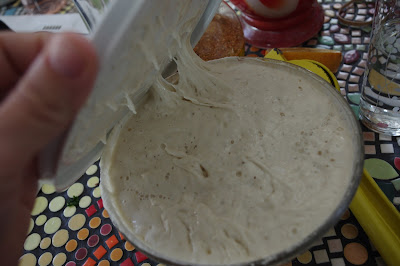How do you eat the crust? I'm pretty sure this might be the next great statistical metric for analyzing such things as personality, social behavior, crime rates, and balancing the national budget. As I sit at the table, I grow more convinced of the merits of a good pie crust. Portioned out evenly and democratically, each one of my children are handed plates of steamy chicken pie topped with a buttery, flaky shortcrust. They are united in their appreciation for this family favorite dish. They all want a piece of the pie, so to speak. But how they consume the precious band of crispy pinched-edge shortcrust is where the party ideology begins to divide.
If it falls on a bell-curve, I'd say my rational, and moderately disciplined daughter (who is our eldest, at 8 years old) would fall on the thinner outsides of this curve. I dare-say the majority of people would not be represented with her disciplined, sensible approach of portioning out bites of crust to evenly accompany the meat, vegetables and gravy. Her consumption of the crust is predictable, fair, consistent, without risk, and...well...maybe a little boring (if you were to ask the risk-takers at the table, that is). She would, however, make the likes of her pension-dependent grandmother, and financial guru Dave Ramsey very proud. But let's be honest, most of us want to enjoy the fat and starch of the world with a little excitement and spontaneity. And so the crispy crust burden grows.
In the greater population of this bell-curve you find my three boys. The older of the three will grab his crust with his fist the instant the plate is before him, and shove the whole thing in his mouth. He will smile at the party within; that is until it's gone. At this point he commences with a depression that will last until his last bite of party-less filling is gone, or it is time for bed. Whichever comes first. He often wonders why he can't have a whole plate of crust, minus the filling. And secretly, I think, he might wonder why the crust on someone else's plate can't be donated to his cause. The large, sentimental eyes inside his wiry frame are persuasive.
Yet sitting next to him is the opposition. The calculating, fun-loving third child will muscle through the nutritious filling, storing up his reward for the end. He savors the large piece of crust, appearing even greater as it is unrivaled on his plate. We want to pat him on his back for his delay of gratification and self-control. This approach causes no drain on natural resources, provided there is no catastrophe before he reaches the end, which, as it turns out, is more common than one might imagine.
But the reality is, in this diverse community of multiple ideologies, heated debates sometimes occur. It's hard to imagine, while staring at a dish of perfectly tender flaky crust, that someone might choose to consume it in a way other than the one held by each member. The noise is often distracting. Which, as you can imagine, is how the fourth child has the opportunity to shimmy out of his safety strap, climb onto the arm-rails of his high-chair, and reach halfway across the table to capitalize on the federal reserves of crust in the casserole dish. Sometimes, like a street bandit, he even manages to swipe a piece from someones plate. Thus begins the deficit problem. "Supply and demand," my 10th grade economics teacher would say, "It's all about supply and demand."
Chicken Pot Pie
Ingredients:
1 recipe for Classic Pie Crust
1 1/2 lb boneless chicken tenders
Canola oil
Salt & Pepper
1 cube of Rapunzel vegetable bouillon with sea salt & herbs
3 cups water
2 tbs corn starch
Splash of dry white wine
1-2 Tbs herbs de provence
About 1 cup each (diced small...about 1/4 inch):
Carrots
Potatoes
Celery
Onion
Method:
Preheat oven to 350 degrees.
Prepare the pie crust and refrigerate (wrapped in plastic) until ready to roll out. Dice vegetables and combine with the herbs de provence. Place in a large casserole dish. Set aside. Pat the chicken dry with paper towel, then season with salt and pepper. Heat some oil in the bottom of a large skillet and cook the chicken until it is browned and crispy around the edges. Remove from the pan and dice. Place on top of the vegetables in the casserole dish. In the skillet, place the vegetable bouillon, three cups of water and wine. Let simmer, stirring until the bouillon is dissolved. In a jug, mix the corn starch with a little water and pour it into the skillet, stirring constantly with a whisk until the broth has thickened. Pour onto the meat and vegetables. Roll out the pastry and cover the casserole dish, rolling the extra inward, so the edge of the crust sits inside the dish. Crimp the edges and poke several holes into the top with a fork. Bake for one hour, or until the crust begins to brown and the filling is bubbly and tender. Let rest for 15 minutes before serving.


